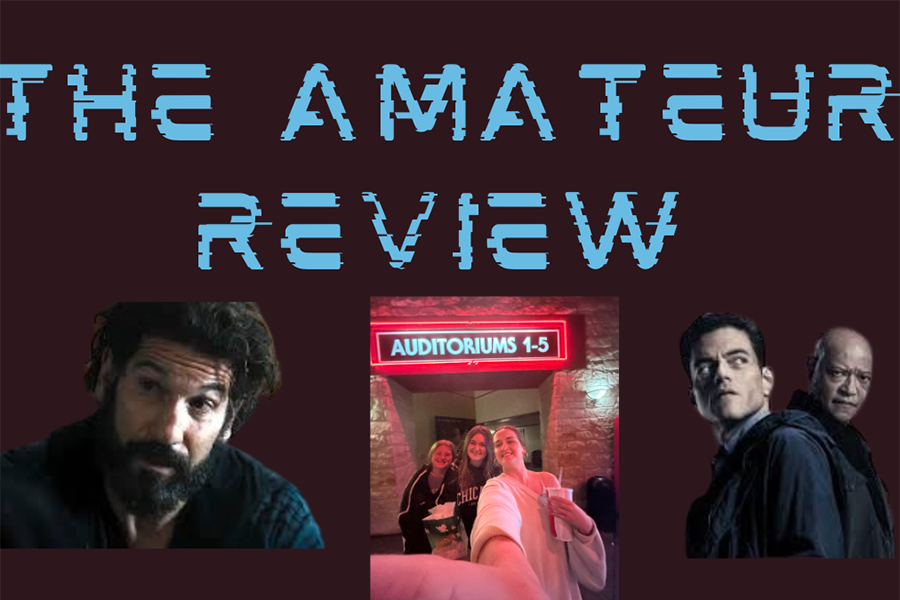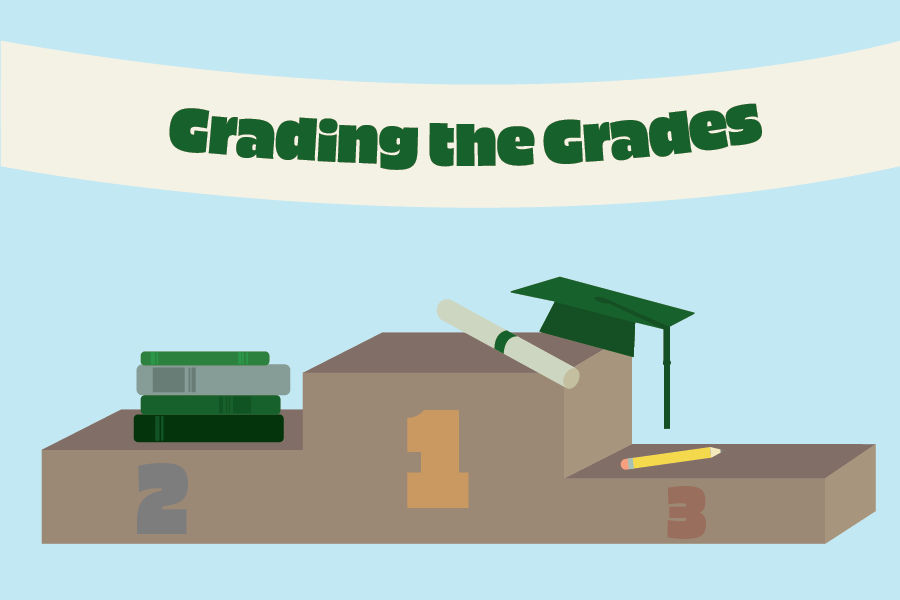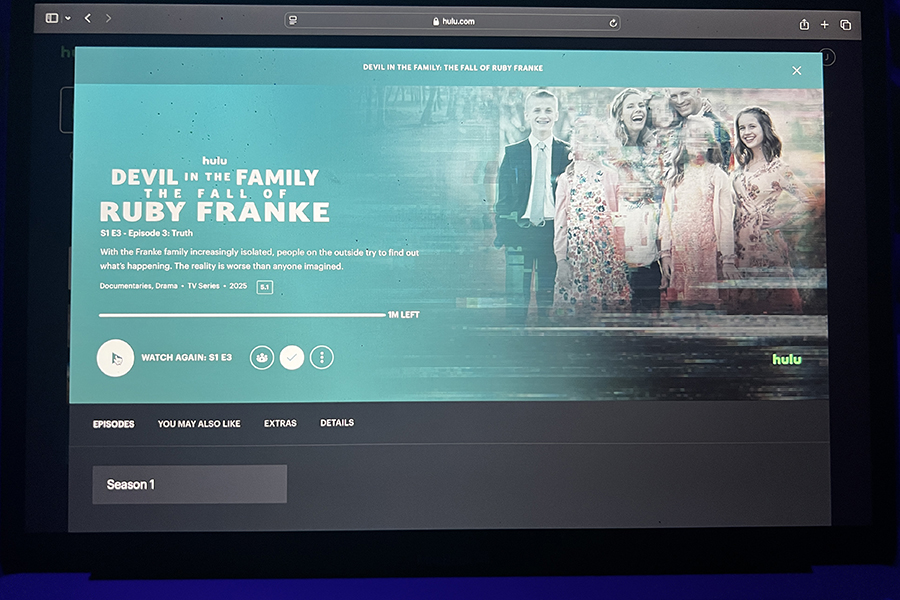Graduates are made, not born.
As a variety of educators, parents, and students begin to arrive for the E3Alliance conference, uncertain anticipation fills the air. Superintendant Bret Champion hurriedly walks to the stage and grabs the microphone, where the awkward silence is quickly broken with a joke about microphones and their ability to stop working right when you need them.
For the most part, the conference was comfortable but also addressed some uncomfortable issues: are parents making sure their children are entering kindergarten ready? Why is there a gap in learning ability between low income black and white kids versus non-low income black and white kids? How can we prepare kids for their future? E3Alliance Conference, hosted here in Cedar Park, was designed to address all these concerns and more.
E3Alliance, or Education Equals Economics, is an association dedicated to creating a blueprint for change for the future of education. It is an opportunity for parents, students, teachers, and administrators from all types of communities to come together to discuss and create a plan of action for bettering the learning process. It’s a relatively new initiative to the education leaders of Central Texas, and definitely a trial run here in the Leander Independent School District.
The first day was full of discussion. Each group was given three main goals and allotted twenty minutes to discuss problems within that goal and throw out ideas on different ways to achieve it.
Goal 1: Children enter kindergarten ready. Glenn Shanks, Assistant Principal of Deer Creek Elementary, had great insight on this goal. As an AP, former elementary teacher and most importantly a dad, Shanks had a lot to say.
“Before a child enters Kindergarten, parents and caregivers should have numerous conversations with them every day,” Shanks said. “They should help them learn colors, shapes, numbers, and letters. Being able to count, with one-to-one correspondence, is a wonderful skill for our Kindergarten children. [Most importantly] parents should read to their children every day.”
Shanks brought up the fact that up to 40 percent of all Central Texas children enter Kindergarten with up to an 18 month delay in skills appropriate for their age. That means that even though children are entering school at the appropriate age, they are already behind before they even get started. A proposed solution is of course parents teach their kids basic skills before entering kindergarten. However, with that is the issue of parents who are unable to work with their children due to job constraints or other concerns. With Texas having the fastest growing child population in the country, there has to be an efficient way to make sure children are school ready.
Goal 2: Eliminate achievement gaps while improving overall student performance. For teachers, the common thread throughout the discussion was the idea of time. With the statewide set curriculum and administrative duties they’re required to do, there is just no time to work more with the students who need it. Along with students who may be a little behind, there are also students who are ready to move forward—students that need to be provided with that higher level of education, but can’t because of the focus on slower students. Scott Monroe, Executive Director of Technology Services for LISD, introduced a valuable point, discussing the lack of technology resources students are provided.
“Many educational experts believe that we are now reaching a point in time in which it could really begin to cause a substantial negative impact on the achievement gap,” Monroe said.
“[Students] are connected to vast amounts of information via the Internet, connected to massive peer groups through“They email and [use] other electronic communications and they are rapidly becoming connected to their schools and teachers electronically through collaboratively learning systems.”
Like Monroe said, students today have become more connected to information through technology in a way no previous generation has been. The problem with achievements gaps may lie in the lack of resources and communication between parents, students, and teachers. Monroe proposed putting laptops in the hands of students who had no access to computers outside the school environment. While Monroe understands that simply providing students with laptops won’t bridge the gaps in achievement, he believes it is the start of a long process.
“Providing community-wide Internet access and ensuring all students have access to the information and human resources they need is a much more complex dilemma than simply providing access to computer hardware,” Monroe said. “It will likely take resources from many parts of the community to begin to turn this disparity around.”
Another proposed strategy was to develop some sort of English Language Learner standard that makes it easier to identify kids who aren’t performing up to par and push positive student outcomes for teacher assignments with incentive programs. Hopefully this strategy would ensure equal distribution of strong and experienced teachers for higher level learners while also fostering to the needs of higher level learners. While this plan of action has many great points, there are also several set backs such as a lack of teacher resources, technology resources, and time.
Goal 3: Students graduate college and career ready, prepared for a lifetime of learning.
“All through high school we’re warned about the big bad real world and how important it is to prepare ourselves for it,” Lachowsky said. “Yet in class, we aren’t being taught about real life experiences. Teachers teach the curriculum, and with a few exceptions, that’s about it. I want real. How are these differentiable equations going to help me when I’m older?”
As a senior graduating in approximately 7 months, Parker Lachowsky, also an attendee at the conference, can speak first hand about the expectations and uncertainties of someone who is about to go into the “real world.”
The big question amongst most groups was how educators can keep school educational while also bringing the real life vocational aspect into the picture. Joyce Chen, a valuable educator here at Cedar Park, spoke about concerns, ideas and strategies to change the environment of the classroom while sticking to the curriculum.
“I feel these problems are deeply rooted, not just in the classroom, but every facet of life,” Chen said. “Too much pressure is put on the teachers to basically shape the student, when really it should not only be the schools job to prepare students for college and careers, but also the parents and the communities. A well rounded student not only knows the material, but also knows how to apply that knowledge to real life.”
Many educators can agree with Chen in their willingness to differentiate the learning environment for students, but it can be difficult at times with all the administrative requirements and standards teachers are responsible for.
“It’s hard to teach and create those real life experiences when so much emphasis and time is put on standardized testing,” Chen said. “A student can work so hard throughout high school, and then they fail the TAKS test and give up. All that hard work and we end up with another capable drop out.”
Goal 4: The community as a whole prepares children to succeed.
The main objective of this goal is to get community based organizations, parents, local industries and education institutions to work together to create a successful environment for students so that the only option they have is too succeed. Studies show that over half of a student’s performance is driven by factors outside of school. A logical solution would be for the community as a whole to work together in a supportive effort with their schools, rather than assuming accountability is just for schools and teachers. If businesses in the community collaborated with the schools to create activities and opportunities not just inside of school, but outside too, they would be much more likely to be successful. While Cedar Park does indeed offer a great amount of opportunities such as COOL week and classes such as Health Technology II and Early Childhood Professions, there are so many more opportunities to be created if the schools and communities would work together to make them happen.
The second day, every group briefly discussed a problem then proposed ideas and approaches toward a solution. After about two hours of deliberation, each group’s notes were taken up and given to the moderators so they could create a basic summary of the results. The third day was the day everyone had been waiting for. It was the last day, but the only one we had to actually begin to see results after all our hard work. The results were exceptional. There were eight proposed ideas to better education, and every single one showed real potential.
Overall the conference was an eye-opening experience into the world of education. For someone who has never seen first hand the care and effort that educators and administrators put into the future of education, it was life changing. Hopefully, the impact of these conferences will continue to spread throughout Central Texas and give students more opportunities to be involved in the future of their own education. But who knows? This is merely a blueprint—a plan of action – to better education, for students, for teachers, and for the community.

![Posing with their UIL State Trophy, the Robolobos Van Halen Team beams with excitement after their win. “It was a team effort,” junior Noah Vo said. “I was happy because something happened in the first match and the match was also really close. So [when] they finally revealed it, I was pretty happy.” Photo courtesy of Amy Lovelace](https://cphswolfpack.com/wp-content/uploads/2025/05/IMG_0910-EDIT-1200x723.jpg)

![Broadcast, yearbook and newspaper combined for 66 Interscholastic League Press Conference awards this year. Yearbook won 43, newspaper won 14 and broadcast took home nine. “I think [the ILPC awards] are a great way to give the kids some acknowledgement for all of their hard work,” newspaper and yearbook adviser Paige Hert said. “They typically spend the year covering everyone else’s big moments, so it’s really cool for them to be celebrated so many times and in so many different ways.”](https://cphswolfpack.com/wp-content/uploads/2025/05/edited-ILPC.jpg)








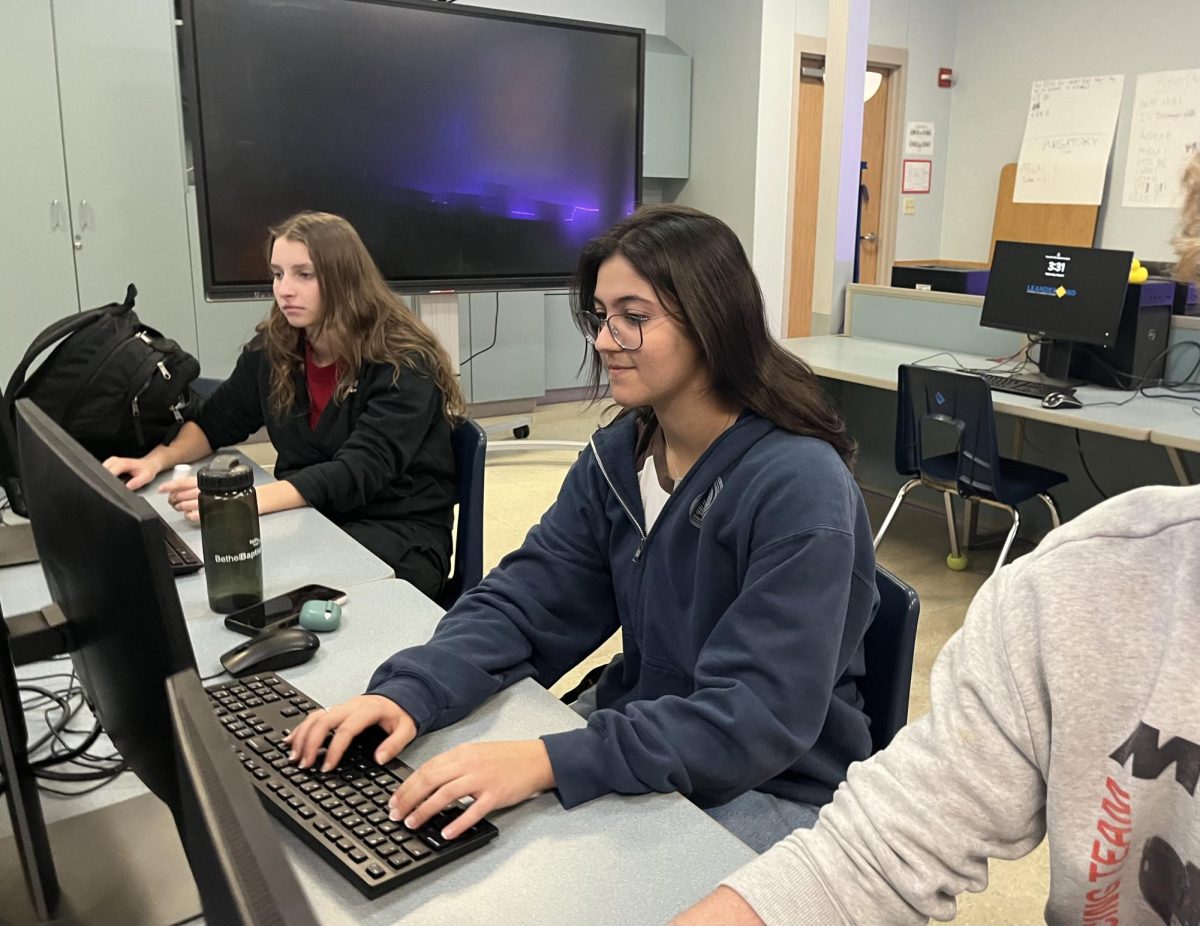




![Bringing her arm over her head and taking a quick breath, junior Lauren Lucas swims the final laps of the 500 freestyle at the regionals swimming competition on date. Lucas broke the school’s 18-year-old record for the 500 freestyle at regionals and again at state with a time of 4:58.63. “I’d had my eye on that 500 record since my freshman year, so I was really excited to see if I could get it at regionals or districts,” Lucas said. “ State is always a really fun experience and medaling for the first time was really great. It was a very very tight race, [so] I was a bit surprised [that I medaled]. [There were] a lot of fast girls at the meet in general, [and] it was like a dogfight back and forth, back and forth.” Photo by Kaydence Wilkinson](https://cphswolfpack.com/wp-content/uploads/2025/03/Kaydence-2.7-23-edit-2.jpg)
![As the support team sits and poses for a photo in the cafeteria with the counseling team they eagerly wait to start their day. "We [all] seem to be a team, I get up every day and there's days where I don't want to go to work today, but I'm thankful that I have a job and I'm blessed to have what I have," Christopherson said. Photo Courtesy of Julie Weltens.](https://cphswolfpack.com/wp-content/uploads/2025/01/AF9E8470-10D7-4C91-BF28-EC8F86BAB66C-1200x852.jpeg)
![Officer Stephanie Cash is in her second year as an SRO at CPHS. “Seeing [students] grow over the years has been kind of cool,” Officer Cash said. “Freshmen that [are] all over the place and then in the next couple of years get a little more squared away and go to class and do work and start thinking about the future. Being a part of a student's growth is the best way to measure my success as an SRO.” Photo Courtesy of Cedar Park Police Department's PIO, Alicia Gallagher.](https://cphswolfpack.com/wp-content/uploads/2024/12/CPHS-SRO-900x1200.jpg)


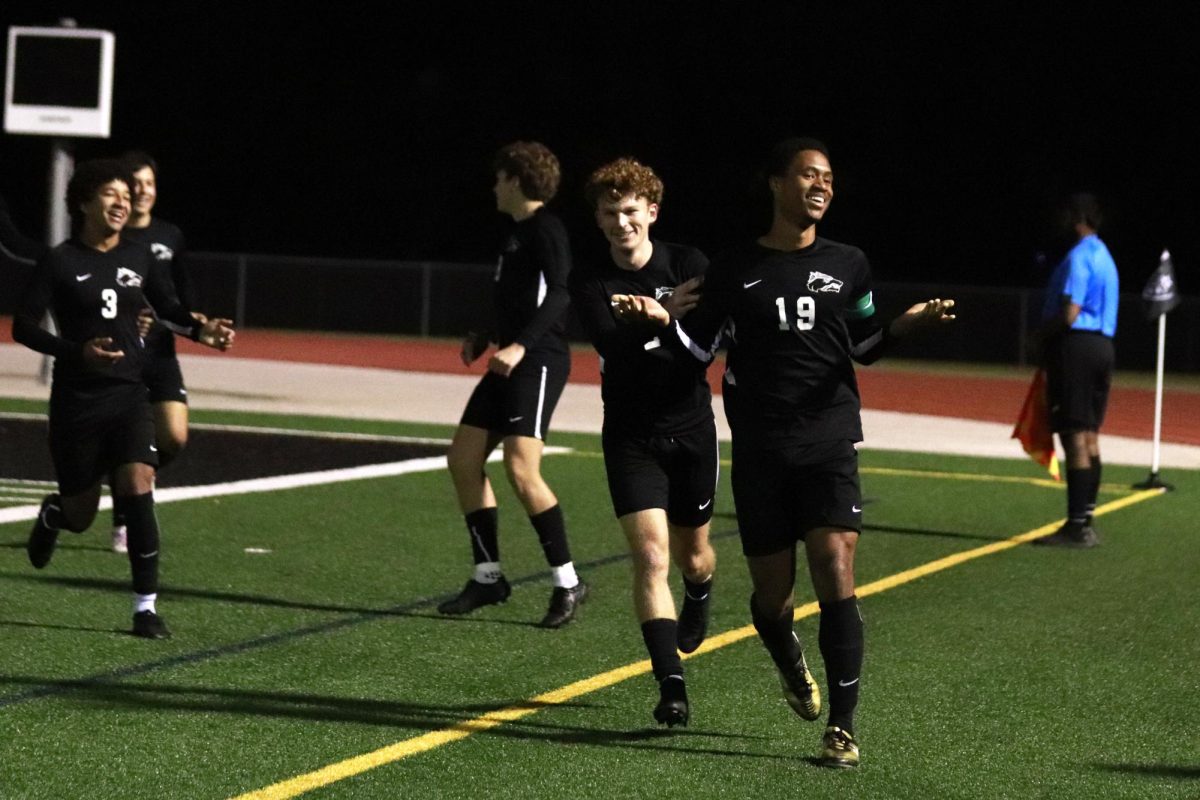
![Taking a breath as he raises his arm up and out of the water, sophomore Kaden Padilla swims the 500 freestyle at the UIL state meet on Feb. 21-22. Padilla placed 10th overall and second in the consolation final in the event, dropping two seconds. “My family was there, so being able to drop time for them was really special,” Padilla said. “It was awesome [finding out I advanced to the consolation finals]. I wasn’t expecting it, and I was very surprised. My parents being there definitely made me a lot happier knowing they got to see me swim in finals.” Photo by Skyler King.](https://cphswolfpack.com/wp-content/uploads/2025/03/kaden-padilla.jpg)

![Three defenders try to stop senior point guard Hope Edwards before the ball leaves her hands. The girls basketball team faced Liberty Hill on Feb 21, losing 58-40. “[My season was] definitely bittersweet,” Edwards said. It's definitely sad [because] I'm gonna miss all my teammates, my coaches and just the whole CP environment.”](https://cphswolfpack.com/wp-content/uploads/2025/03/julia-128-1200x800.jpg)
